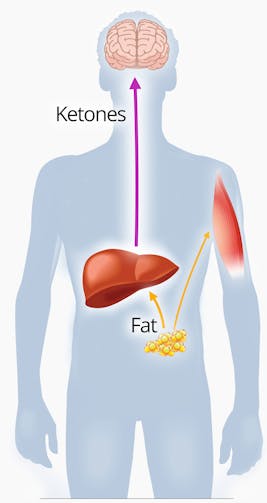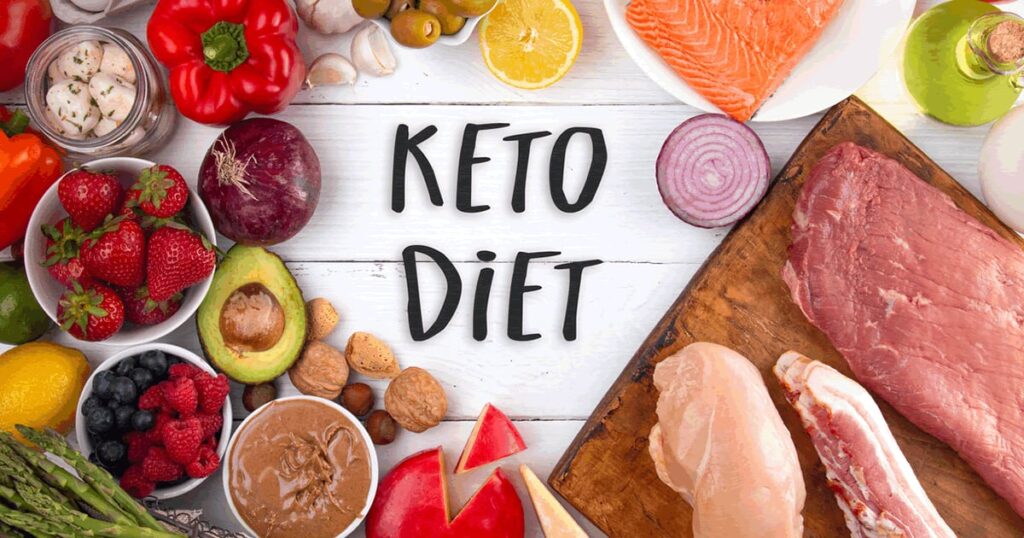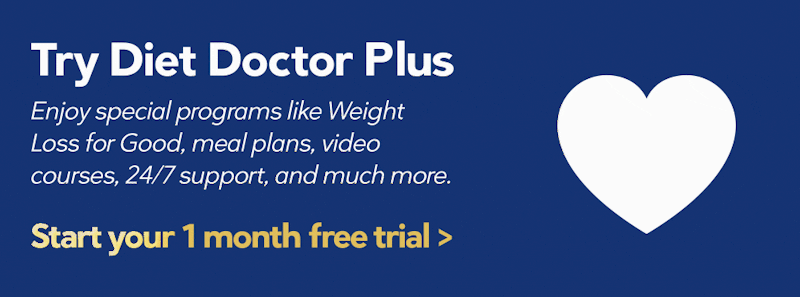1. What is a keto diet?
The keto diet is a very low-carb, higher-fat diet. It’s similar in many ways to other low-carb diets.
While you eat far fewer carbohydrates on a keto diet, you maintain moderate protein consumption and may increase your intake of fat. The reduction in carb intake puts your body in a metabolic state called ketosis, where fat, from your diet and from your body, is burned for energy.
You can quickly learn more about the basic ideas behind the keto diet in this video course:
Watch the entire 8-part video course
What “keto” means

A “keto” or “ketogenic” diet is so named because it causes your body to produce small fuel molecules called “ketones.”
5 This is an alternative fuel source for your body that can be used when blood sugar (glucose) is in short supply.When you eat very few carbs or very few calories, your liver produces ketones from fat. These ketones then serve as a fuel source throughout the body, especially for the brain.
The brain is a hungry organ that consumes lots of energy every day, and it can’t run on fat directly. It can only run on glucose – or ketones.
On a ketogenic diet, your entire body switches its fuel supply to run mostly on fat, burning fat 24-7. When insulin levels drop very low, fat burning can increase dramatically. It becomes easier to access your fat stores to burn them off.
This is great if you’re trying to lose weight, but there can also be other benefits, such as less hunger and a steady supply of energy — without the sugar peaks and valleys that often occur when eating high-carb meals. This may help keep you alert and focused.
When the body produces ketones, it enters a metabolic state called ketosis. The fastest way to get there is by fasting – not eating anything – but nobody can consistently fast forever.
A keto diet, on the other hand, also results in ketosis and can be eaten indefinitely. It has many of the benefits of fasting – including weight loss – without having to fast long term.
Learn more about ketosis
Who should NOT do a ketogenic diet?
There are controversies and myths about a keto diet, but for most people it appears to be very safe.
However, three groups often require special consideration:
- Do you take medication for diabetes, such as insulin? More
- Do you take medication for high blood pressure? More
- Do you breastfeed? More
For more details about pros and cons in different situations, check out our full guide: Is a keto diet right for you? You can also read about a scientific paper exploring the potential contraindications for a keto diet.
Are you a doctor or do you need your doctor to help you with medications on a keto diet? Have a look at our low carb for doctors guide.
Source: atozblogg.com







Be the first to write a comment.